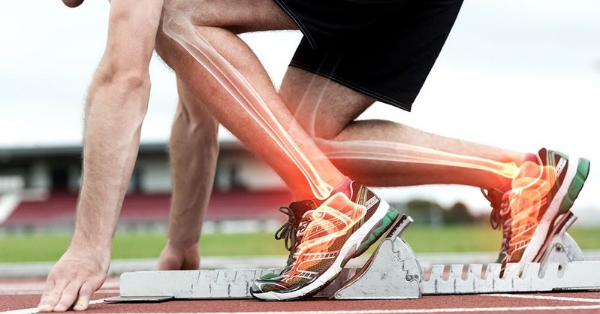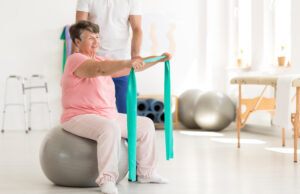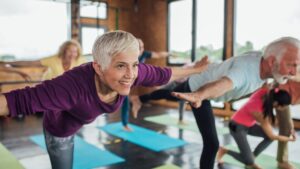Your Workout Is Weakening Your Bones If You Skip This One Move

Your Workout Is Weakening Your Bones If You Skip This One Move – Have you ever thought your sweat-dripping workout routine might be doing more harm than good to your bones?
It’s easy to believe that as long as you’re moving—whether it’s running, cycling, or strength training—you’re building stronger bones. But there’s one crucial move that most people skip, and without it, your workout might actually be setting you up for weaker bones, not stronger ones.
Let me explain.

I’ve seen it time and again as a health and fitness writer: gym-goers, fitness enthusiasts, and even personal trainers overlooking this one fundamental movement. The irony? It’s one of the most effective exercises for bone health, backed by science and prescribed by top physical therapists. And skipping it might be costing you the bone strength you think you’re earning.
So, what’s this mystery move?
Let’s break it down.
The One Move You Should Never Skip: The Jump (a.k.a. Plyometric Training)
You read that right. Jumping—whether it’s jump squats, box jumps, or even skipping rope—is one of the most powerful movements for stimulating bone growth. This might sound too simple to be true, but it’s grounded in decades of science.
Why? Because jumping applies high-impact force to your skeleton. This force stimulates osteogenesis, the process by which new bone is formed. Your bones are living tissue, and just like muscles, they adapt and strengthen in response to stress. The higher the force, the stronger the response.
Now compare that to something like running or cycling. While great for cardiovascular health, they’re not as effective at improving bone density, especially in critical areas like your hips, spine, and wrists—places most vulnerable to fractures later in life.
A study published in the Journal of Bone and Mineral Research found that just 10 jumps a day can significantly increase bone density in premenopausal women. That’s just one minute of effort a day for stronger bones. Imagine the long-term payoff.
Why Jumping Matters More Than You Think
Let’s go a layer deeper.
After age 30, your body naturally begins to lose bone mass. It’s a slow but steady decline—about 0.3% to 0.5% per year. For women, this accelerates dramatically post-menopause due to the drop in estrogen, a hormone that helps protect bones. Men aren’t off the hook either—by their 70s, men can experience significant bone loss too.
The consequence? Osteopenia and osteoporosis—silent conditions that don’t show symptoms until a bone breaks. Every year, more than 8.9 million fractures worldwide are caused by osteoporosis, according to the International Osteoporosis Foundation.
The good news? Exercise can stop and even reverse bone loss—but only if you include the right kind of exercise.
And jumping is at the top of the list.
The Problem With Most Modern Workouts
Modern fitness culture has a blind spot. We obsess over calorie burn, visible muscle, or endurance. That’s why workouts like spinning, barre, yoga, and long-distance running have skyrocketed in popularity.
While each of these has its benefits, none are particularly great for your bones.
Cycling, for example, is a non-weight-bearing activity. You can cycle 100 miles and still not provide enough force on your bones to stimulate growth. Swimming? Fantastic for joint health and cardio, but it’s zero-impact—your bones are taking a nap. Even weightlifting, while excellent for muscle and bone strength, doesn’t always deliver the explosive impact bones need unless it’s done with dynamic, multi-directional forces.
That’s why jumping matters. It’s a functional, whole-body movement that mimics how we naturally build bone—through short bursts of high impact, with the added benefit of improving coordination, power, and agility.
How to Start Jumping Without Getting Injured
Now, you might be thinking: “Jumping sounds intense. Isn’t that how people hurt their knees?”
That’s a fair concern—but the key is progression.
If you’re new to jumping or have joint concerns, you don’t have to go all out on day one. Start small.
Try this:
Week 1: 10 small hops in place (barefoot if you’re on a soft surface).
Week 2: Add light jump squats (2 sets of 5).
Week 3: Introduce jump rope (30 seconds on, 30 seconds off for 5 minutes).
Week 4 and beyond: Progress to box jumps or lateral hops, depending on your comfort.
The key is to land softly, with bent knees and hips engaged. Think of yourself as a spring—absorb the impact, don’t fight it.
If you’re over 50 or have osteoporosis, consult with a trainer or physical therapist first. They can guide you to low-impact plyometrics, like step-downs or resistance band exercises that mimic jumping mechanics without high stress.
Read: Your ‘Healthy’ Smoothie Has More Sugar Than a Coke
Real-Life Benefits of Jumping for Bone Health
Let’s talk about the real-world benefits, beyond the science.
When you train with jumps or plyometric movements, you’re not just building bone—you’re building resilience.
You’re improving balance, which lowers your risk of falls.
You’re enhancing muscle power, which helps with everything from getting up off the floor to climbing stairs.
And you’re future-proofing your body, especially as you age.
Consider this: Hip fractures are one of the most serious injuries for older adults. About 20% of people over 65 who suffer a hip fracture die within a year due to complications. The main cause? A fall and weak bones.
Now imagine if just a few minutes of jumping each week could drastically lower that risk. That’s not just smart fitness—it’s a life strategy.
How to Add Jumping Into Your Weekly Routine
The best part? You don’t need to dedicate a whole workout to jumping.
Here’s how to add bone-building jump training into your existing routine:
Warm-Up Finisher: Add 30 seconds of jumping jacks or jump rope to your dynamic warm-up.
Workout Circuit: Insert 2 sets of 10 squat jumps or skater hops between weightlifting sets.
Dedicated Jump Session (2x/week):
10 jump squats
10 box jumps (or step-ups if you’re new)
20 seconds of jump rope
Rest 60 seconds and repeat for 3 rounds

It’s that simple.
And if you’re already weightlifting? Just make sure to include power-based movements like kettlebell swings or jump lunges. These not only spike your heart rate but also load your bones in ways that stimulate growth.
Don’t Let Your Workout Betray Your Bones
You’ve worked hard for your health. Don’t let your dedication be undermined by a simple oversight.
Skipping jumping in your workout might seem harmless now—but years down the line, it can make a difference in whether you’re able to stay active, independent, and fracture-free.
Bone health isn’t just about drinking milk or popping a calcium pill. It’s about movement—intentional, powerful movement that challenges your body and sends the message: “Stay strong.”
And nothing sends that message louder than a good jump.
So the next time you hit the gym or roll out your mat at home, ask yourself:
Are you giving your bones the impact they need?
Because if not, your workout might be working against your body’s foundation—not for it.
Conclusion: Make Jumping a Non-Negotiable
The best workouts aren’t always the most complicated. Sometimes, it’s the simple moves—like jumping—that carry the most long-term value. If you’ve been skipping jumps because they seem childish, too hard, or unnecessary, it’s time to reconsider.
Your bones need more than just motion—they need impact, intensity, and intent.
Start jumping. Stay grounded. Stay strong.
Your future self will thank you.







